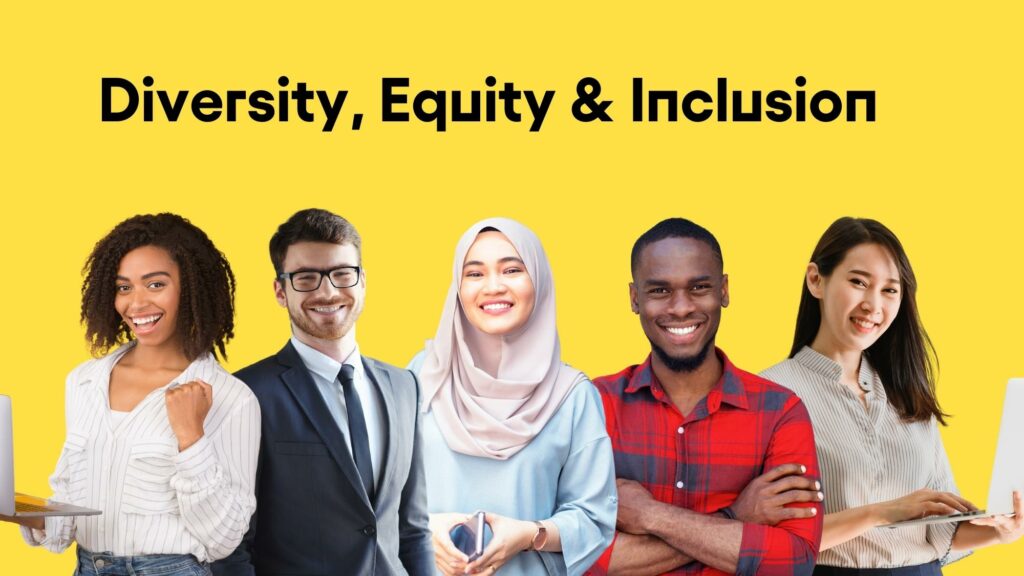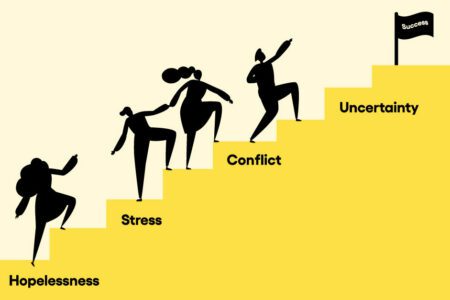If you have access to the Internet, then you’ve seen many companies consistently highlight the importance of diversity, equity, and inclusion within their organization. This could be through ads, blog posts, interviews, and other marketing strategies.
Discussion on the significance of a strong DEI policy is a great start to getting organizations to implement it. But the execution of DEI isn’t just for aesthetics, or to be able to market a diverse workplace. It’s a workforce cultural reset, a review of seemingly all-encompassing plans that may not be as inclusive as one might think, and a reflection on how unconscious bias can greatly affect hiring and talent management decisions.
With so much to learn and change, how can HR improve diversity within their organization and help fight involuntary exclusivity? We’ve got 6 tips for you.
1. Creative inclusive job descriptions
While you may think job descriptions are hardly anything to be worried about, this couldn’t be further from the truth. Job descriptions you post online are one of the very first impressions a company will make to outsiders looking in. Leaving the genuine impression that you’re an organization that understands the benefits of diversity, equity, and inclusion in the workplace will make those from marginalized groups much happier and more comfortable in applying for the role.
When writing job descriptions, it can be difficult to realize that some words or phrases can appear like exclusions to many people who will come across them. So, it’s important to adopt a language that could insinuate that not only everyone can apply, but they are happily welcomed and encouraged to do so.
For example, you can avoid wording like “strong-English language skills required” (unless it is specific to the role) that may deter those with English as a second language from applying, or words like “young and energetic” to avoid age discrimination. You can always find more tips on phrasing and correct wording on the web. Remember, a major part of DEI (shifting to DEIB – diversity, equity, inclusion, and belonging) is also creating a welcoming environment for anyone who could potentially end up at your organization.
2. Ask for feedback from your employees, then honor it
HR and higher-ups creating a DEI policy without consulting employees first is like a doctor examining a patient without asking them where it hurts; it’s just counterproductive.
The employees of your organization are a crucial component to making DEI a success in the workplace. Employees aren’t simply just a part of the organization’s culture. They have the power to create it. By giving employees the space and resources to speak on what can improve or what kind of leaders would help them in their roles, you are giving your company a chance to succeed by consulting with those that will give the key answers with no hesitation.
Employee surveys are a great way to get to know what employees are thinking without having them feel like they’ve been put on the spot. They can be made anonymous and can give HR and executives an idea of how employees feel working for the organization in question. Questions can vary from opinions and employee satisfaction to thoughts on the workplace culture.
3. Hold leaders accountable
Leaders in organizations have an important job of not only keeping business running but ensuring the people who are making that possible are satisfied, whether it is with their career path, their role within the organization, or the tasks on their work to-do list. Needless to say, leaders have an important job.
Holding leaders accountable in DEI is a necessity. This means ensuring that they are uplifting their employees and establishing a healthy work environment for everyone involved. C-suites have an enormous impact on promoting and creating a certain work culture, and if there are important factors missing from this initiative that lack diversity, equity, and inclusion, or simply feel performative, it may be time to educate and make some changes.
“Performative measures [at work], like putting up black squares or pride flags…folks are looking beyond just that piece. They want to know what you’re doing within your organization to effect that change, what you’re doing to make differences,” says Tracy Paulo-Brown, Director of Talent Attraction & Diversity at Rexall Pharmacy Group. “You can’t post things externally and then keep things status quo.”
Rexall’s #AllIn campaign vows to hire with inclusivity and diversity rooted deep in the hiring and talent management process. The organization has won several awards for its DEI-pro culture, and in 2021, was named one of Canada’s Best Employers by Forbes.
You can learn more about Rexall’s diversity, equity, and inclusion efforts on this episode of People Potential with Amanda.
" Differences drive performance. "
Tracy Paulo-Brown
Director of Talent Attraction & Diversity at Rexall Pharmacy Group
4. Coach consistently
Leaders who attend training sessions that help to better their understanding of DEI and its importance is a great first step, but it might not always be helpful when it comes to the long term.
Organizations are always changing and evolving, and it’s important to keep up with them, all while remembering that prioritizing the employee experience should always come first. Managers and executives need to be able to handle changes by keeping DEI in mind or improving the policy as the organization goes forward. Past training seminars for DEI might not necessarily apply to new cases, but being coached through changes to make better decisions for employees is the answer.
Coaching helps everyone in the organization understand that they are all capable of learning more about DEI. The value that is brought into an organization when everyone is participating in making the workplace welcoming for each other is what makes the work culture a healthy and inspiring one.
Coaching can range from incorporating a formal program within the organization, to simply having scheduled discussions about any issues, questions, or concerns surrounding DEI.
5. Be compassionate, be flexible
If the pandemic has taught us anything, it’s that a large percentage of jobs, especially in the corporate sector, can be done from home. And for some, this has been the answer to their work-life balance prayers.
Many have obligations outside the office that will sometimes need to take priority over being at a desk and completing a weekly report for the boss. These priorities can be difficult to accomplish if physically being at the office 8 hours a day is the norm. This is why it’s so important to establish a culture that recognizes employees as individuals outside the office with lives to lead, things to do, and people to take care of.
“One of the things that I’m pleased to talk about is Rexall’s change in mentality [when it comes to] the future of work […] and adopting this idea that hybrid work is sort of the way to go and that individuals don’t need to show their worth by being in an office all day, every day,” explains Tracy. “The last two years, we’ve shown that we can still do our jobs wherever we are.”
For parents who need to pick up their kids from the bus stop before and after school, for those who have trouble making the long commute to the office, and everyone in between, hybrid or remote work has been a game-changer for productivity. Keep in mind that keeping employees, especially in a hybrid environment, is not only about raising their salaries. It’s about making them feel like they belong.
6. Fight unconscious bias
Whether we’d like to believe it or not, we all have unconscious biases. While this doesn’t necessarily make us bad people, it can affect how we make our decisions, and that would not be doing HR or hiring teams any favors.
We’ve all got a fixed mindset, and when it comes to our decision-making, we tend to stray from different perspectives because we’re so accustomed to our own. Even the quietest beliefs that we don’t actively think about can take over our thought process. This is where people data comes in to help you make bias-free HR decisions.
According to Brandon Hall Group, behavioral assessments are “a systematic evaluation of candidate personality profiles used to gauge the viability of a candidate based on things like culture fit, work style, and potential.”
SuccessFinder’s assessment provides 340 force-choice questions that help HR professionals understand a potential candidate by breaking down their natural behavioral preferences. It delivers hyper-relevant people data and calculates 85 different behavioral traits to help determine if a potential candidate is right for your organization. With tools like Performance Predictor and Culture Fit, the results can give hiring teams a full analysis of whether the candidate is right for the role, as well as if they would fit into the company’s culture.
Want to improve diversity, equity, and inclusion in the workplace? Find out how you can hire right the first time and make your work culture a great one for everyone by getting in touch with us today!




